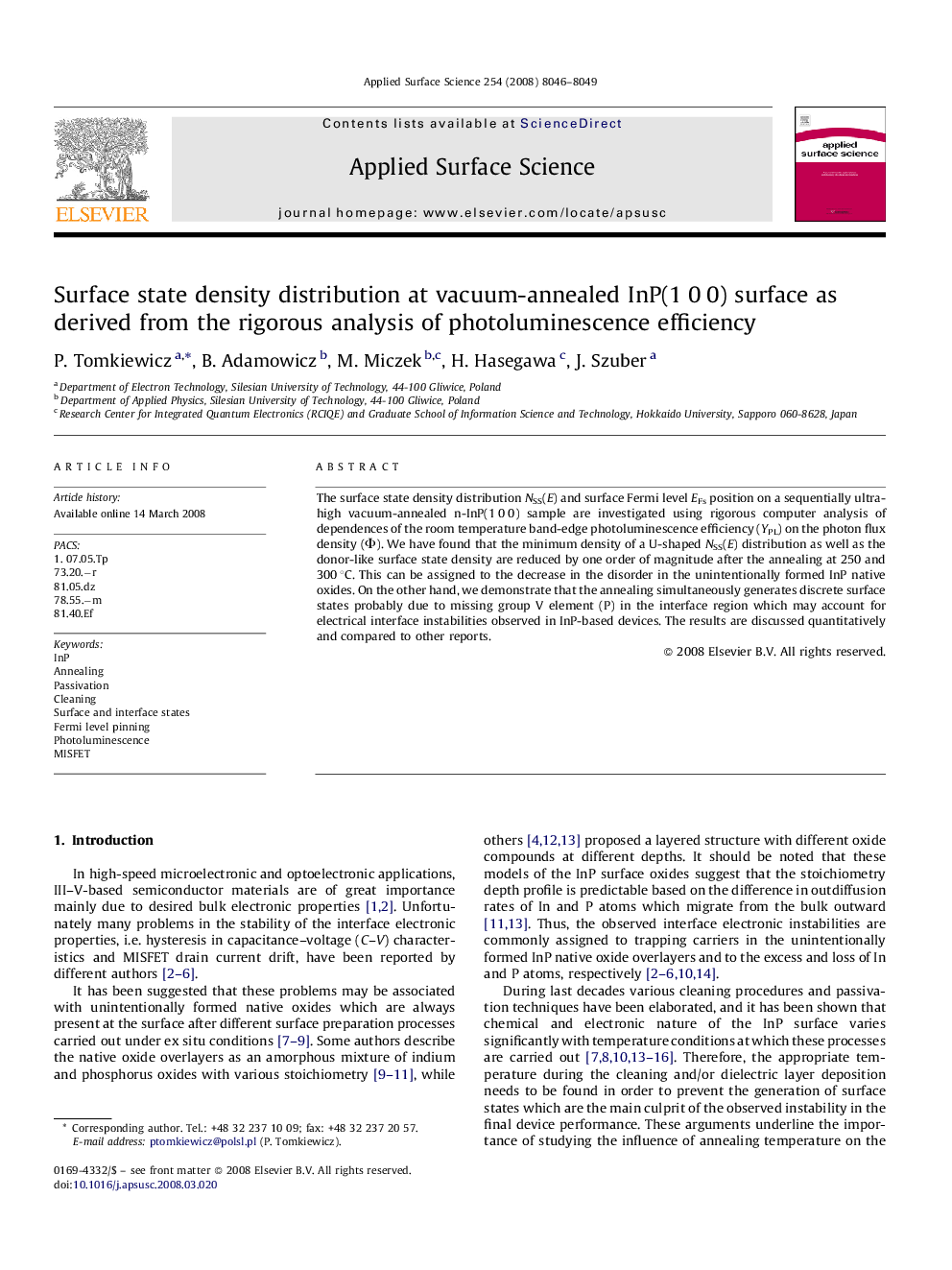| کد مقاله | کد نشریه | سال انتشار | مقاله انگلیسی | نسخه تمام متن |
|---|---|---|---|---|
| 5365665 | 1388335 | 2008 | 4 صفحه PDF | دانلود رایگان |

The surface state density distribution NSS(E) and surface Fermi level EFs position on a sequentially ultra-high vacuum-annealed n-InP(1 0 0) sample are investigated using rigorous computer analysis of dependences of the room temperature band-edge photoluminescence efficiency (YPL) on the photon flux density (Φ). We have found that the minimum density of a U-shaped NSS(E) distribution as well as the donor-like surface state density are reduced by one order of magnitude after the annealing at 250 and 300 °C. This can be assigned to the decrease in the disorder in the unintentionally formed InP native oxides. On the other hand, we demonstrate that the annealing simultaneously generates discrete surface states probably due to missing group V element (P) in the interface region which may account for electrical interface instabilities observed in InP-based devices. The results are discussed quantitatively and compared to other reports.
Journal: Applied Surface Science - Volume 254, Issue 24, 15 October 2008, Pages 8046-8049